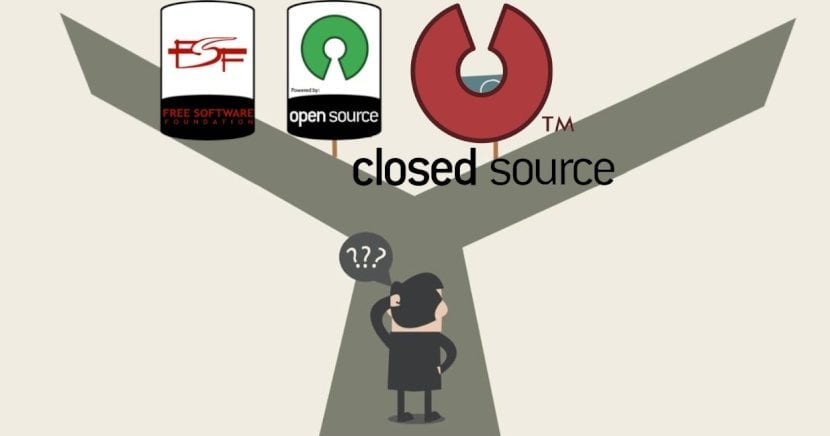
Free and Open Software: Technological Impact on Organizations
The use of Free and Open Software continues to grow, but not only among enthusiastic individuals and individuals, lovers of technology, among others, but also among Public and Private Organizations, as well as among Educational and Scientific Research Organizations.
All this to a great extent due to the demand that has emerged as a trend among Organizations for reducing costs in products, licenses and certified labor in commercial, proprietary and closed products, in addition to taking advantage of the new advantages of what is now known as the "Cloud" and thus being able to reinvent and transform itself digitally.

Introduction
Today it is clearly understandable that The use of Applications, Systems and Solutions based on Free and Open Software facilitate and lower the cost of insertion and innovation processes in the world of the digital economy, as well as the contribution of the Free Software Communities through open innovation helps Organizations to more easily adopt digital transformation.
When the Free and Open Community spreads, shares and collaborates with each other, it creates a network of experiences, very valuable and productive, similar to those stages of the Middle Ages of Humanity when the Men of the Renaissance shared their creations, discoveries, research and inventions, making us a more humane, creative and productive Society.
Therefore, it is no secret to anyone that today, that Free and Open Software helps organizations navigate and advance on the path to digital transformation, to respond in an agile and effective way to the increasingly growing and accelerating demands of the business.

Contents
Importance of Free and Open Software in Organizations
Free and Open Software programs and systems provide the necessary efficiency, flexibility and security at low cost to achieve the so-called digital transformation, taking into account that the reason for this is due to the great difference between the culture and philosophy of Free and Open Software and Private and Closed Software, that is, in the community development model, because precisely from there arises the innovation.
The Organizations that today and in the future will have the highest market value will be those with the best "digital assets". That is, better programs, systems, and platforms that can provide an agile and effective response to their consumers in the midst of this accelerated pace of growth and commercial and technological development, internal and global, in order to obtain a competitive advantage and achieve organizational success. .
The focus of any current Organization is and must be to be at the forefront in the process of incorporating and improving their digital assets to be more competitive, and provide more and better services to its clients / users and citizens in the case of the public sector. This is, above all, to face the changes proposed by the so-called digital transformation of the present times.
Especially Free and Open Software in the Research and Education, Telecommunications, Banking, Health and Public Management industries, has a lot to contribute in terms of reliable, agile and flexible solutions for all types and sizes of Organization.
Still weighing the long implementation processes that may occur due to cultural and technical change that require digital transformation processes based on the change from Private and Closed Software to Free and Open Software.
Available solutions based on Free and Open Software
Free and Open Software can be used in many areas of an Organization, for which we will mention only some areas and some examples of uses and / or useful Applications in them.
Server Teams
- E-mail: sendmail, postfix, qmail, exim, courier, zimbra, poen-xchanges, kolab, citadel
- Agendas: sogo
- Website: apache, ngix
- Records: samba
- DHCP: dhcpd
- DNS: connective
- NSF: nfs kernel server
- ftp: proftpd, vsftpd, pureftpd
- SSH: openssh-server
- LDAP: openldap, apacheds, opendj, 389 directory server
- NTP: ntpd
- Print: cups
- Proxy: squid dansguardians
- Firewall: monowalld, endian, pfsense
- IPS / IDS: snort, meerkat, bro, kismet, ossec, tripwire, samhain, aide
- Database: postgres, mariadb
- IP telephony: asterisk, vitalpbx, issabel, elastix, freepbx
- Document management: alfresco openfiler
- Business Management: odoo, opencrm
- Monitoring: nagios, cacti, zenoss, zabbix
- Support: lpg, ostiket
- Inventory: ocs-inventory
- Cloning: fog project
- Messenger service: gammu, gajim, jabber,
User Equipment
- GNU / Linux distributions: see here
- Multimedia Edition: see here
- Software development: see here
- Entertainment: see here
- Office applications and previous: see here

Conclusion
Today, as we can see after reading this publication, it is evident that Any Organization can with some push and support to sustain the essential computer systems of itself through the use of Free and Open SoftwareIn other words, this fact is already a viable reality.
At present, there are many projects of applications in free and open software for small and medium organizations, including Linux Distributions that include a whole range of applications aimed at a business or corporate public, public or private.
A whole market around free and open software currently exists, private Organizations (Companies) or Independent (Communities) that offer support and development, which have managed to demonstrate success stories in large companies and public administrations, and that today, these examples of implementation and use are a flag that shows that free and open software is something real.
In short, free and open software allows us to save costs on licenses, and implement a whole range of Information Systems, which are usually implemented under proprietary and closed software licenses.
All this on open architectures, which in turn make it easier for them to progressively become independent from manufacturers and opening the door to a much larger market of other vendors from which to obtain products and support.
And the day has come when free and open software has overthrown that old belief that Free and Open Software is something prone to failure and unsupported.
Very interesting and accurate article, as one might expect from Linux Post Install (LPI).
In order not to repeat in depth in the post, comment that in an ideal world free and proprietary software should be related to humanity as medicine does (I am speaking broadly so that no one misunderstands me) that is, a necessary and essential basis that it must and must be universal and free and then another optional aspect of payment.
With this example I want to visualize that if you really want to promote the development of humanity without ties, it cannot be done the other way around (as has been done since the dawn of computing) that is, a generic agreement by a company converting its products closed in standard by the mere fact of being present everywhere due to its agreements with manufacturers and governments and institutions.
As Linux Post Install well expresses, what is achieved with this is to create an extra cost that, although it may be higher or lower, even assumed by everyone –especially in good times– entails a dependence on those brands and their products, which is why They manage to put a thousand obstacles if you want to get out of it. On the contrary, the situation would be very different, a free software computing world in which institutions can be independent (thereby achieving more security and privacy because they can depend and contribute themselves directly), with this no company could extort or extort money from them. influence any State due to the dependency that it may have created with a certain company, in this case, IT.
In short, for all that is exposed by Linux Post Install, Free Software is what should be offered and seen by institutions, and since it is the user who chooses and costs a proprietary option, and does not turn proprietary into a de facto standard .
Thank you for your comment, which in turn is very punctual and complements its content, that is, the learning, use and massification of Free Software and GNU / Linux
Here is another one that has similar content in the same sense: https://blog.desdelinux.net/aprender-software-libre-gnu-linux-sin-instalar-nada/